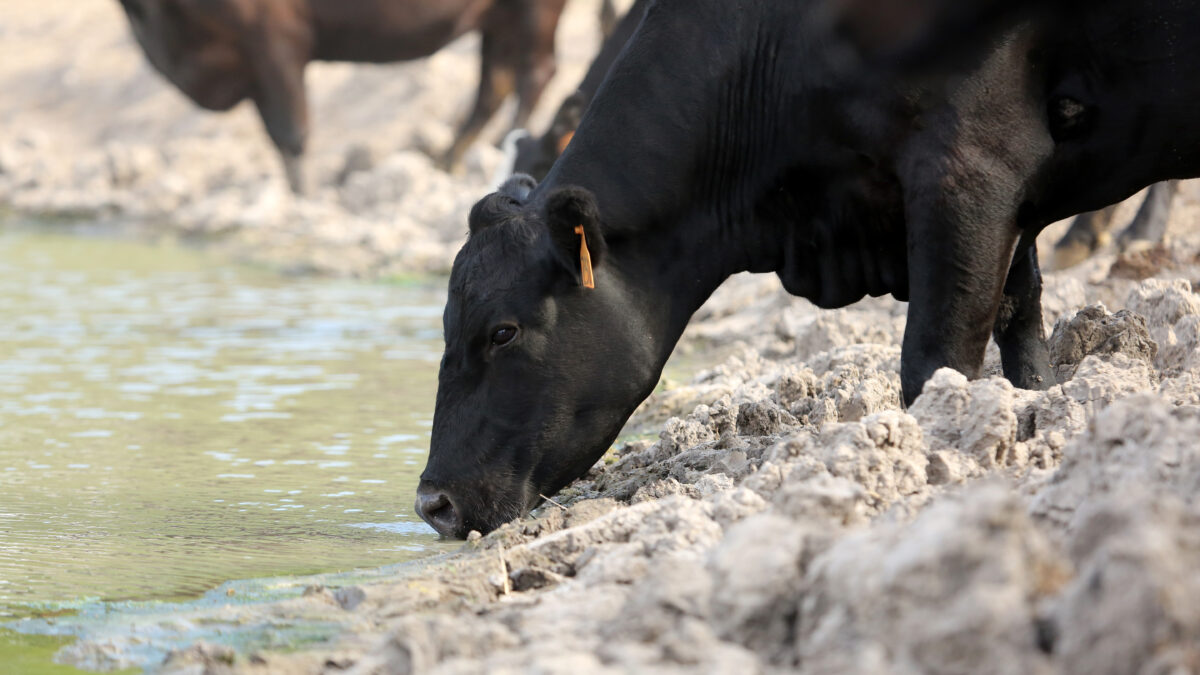Agriculture Faces Increasing Competition for Limited Water Resources
Guest Author
Special Contributor to FB.org

photo credit: Texas Farm Bureau, Used with Permission
Guest Author
Special Contributor to FB.org
Download a 60-second audio version of this column at www.fb.org.
To most people in the U.S., water is simply assumed. Without much thought, they turn on the shower, brush their teeth, make coffee or tea, flush the toilet, and grab a full, cold plastic bottle of name-brand water. Taking a bite of food or slipping on a cotton T-shirt does not inspire thoughts of water, its role in agriculture, or challenges to managing the nation 's water supply. But water is the lifeblood of agriculture, and plays an ever-increasing role in food availability, cost, food security, and national security… and competition for it is increasing as supplies decrease.
It 's hard to grasp the importance of managing water in areas where it seems so abundant. More than 71 percent of the Earth 's surface is covered with water, though little is ever in the right place, in the right form, at the right time.
Oceans hold 95 percent of Earth 's surface water, but it is mostly saltwater and unsuitable for most uses. The remaining 5 percent of surface water is fresh, and found in rivers, lakes, ice caps and glaciers. Below the surface, fresh groundwater is found mostly in aquifers – saturated porous bedrock below the water table.
Fresh water is needed for household use, commercial and industrial production, thermoelectric energy production, mining, aquaculture, livestock, and irrigation. Agriculture ranks only behind thermoelectric energy production in its use of water in the U.S.
Cropland gets water from two sources: the sky and irrigation. Weather is unpredictable, and each year, millions of acres of crops are lost to flooding, hail or drought. An inch and a quarter can be the "million dollar rain." Just a little bit more can trigger a flood or drown out a crop, and hail results in the loss of 1 percent to 2 percent of crops annually.
Conversely, droughts have a ripple effect, with impacts extending beyond farming. Now in its fourth year, drought in California caused the state to lose one-third of its water supply, with agriculture losing $1.8 billion and 10,000 jobs, and a ripple effect of another $900 million and 11,000 jobs.
Irrigation adds predictability and reliability to crop production. The majority of farmland irrigation comes from surface water, but a significant amount of groundwater is withdrawn from five major U.S. aquifers.
Of the nation 's water supply, about one-third is used for irrigation, 3 percent for aquaculture and less than 1 percent for livestock production. Crop irrigation grew dramatically from 1950 to 1980, when it topped out at 150 billion gallons a day. During that time, irrigation growth followed a straight-line relationship with an increasing U.S. population as it expanded from 150 million people in 1950 to 225 million in 1980.
Since 1980, water use for cropland irrigation has declined by more than 20 percent in the U.S., even as the country 's population has grown to 323 million. In 2010, water use for crop irrigation was the lowest since 1965. Increased productivity through improved genetics and management practices – including conservation tillage practices that preserve soil moisture and new irrigation technologies – allow farmers to grow more with less, and on less land. But with years of low rainfalls to replenish both fresh water and groundwater supplies in many areas, less and less water is available for agriculture.
NASA and University of California data show that of the 37 large aquifers worldwide, 21 have reached tipping points and withdrawals exceed sustainable levels. Two are in the United States, including one in California 's Central Valley, which accounts for about half of the nation 's fruit and vegetable production.
Managing the multiple interests is an enormous challenge, complicated by complex hydrology below the ground, the unpredictability of rainfall above ground, state and federal laws, rural vs. urban issues, politics, and tradition. The challenge needs to be addressed as agricultural production needs to triple by 2050 to meet the needs of a growing population. There are many demands for fresh water – and they are all valid – but agriculture meets one of the most basic needs: feeding people.
Robert Giblin writes, speaks and consults about agricultural and food industry issues, policies and trends.